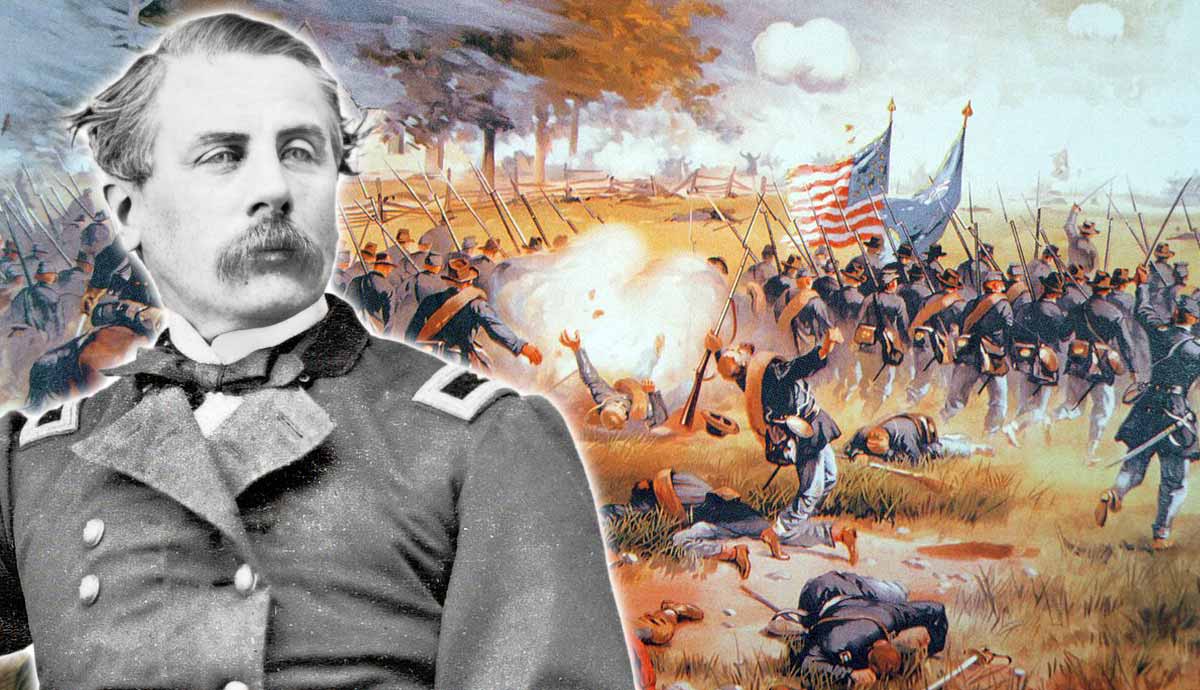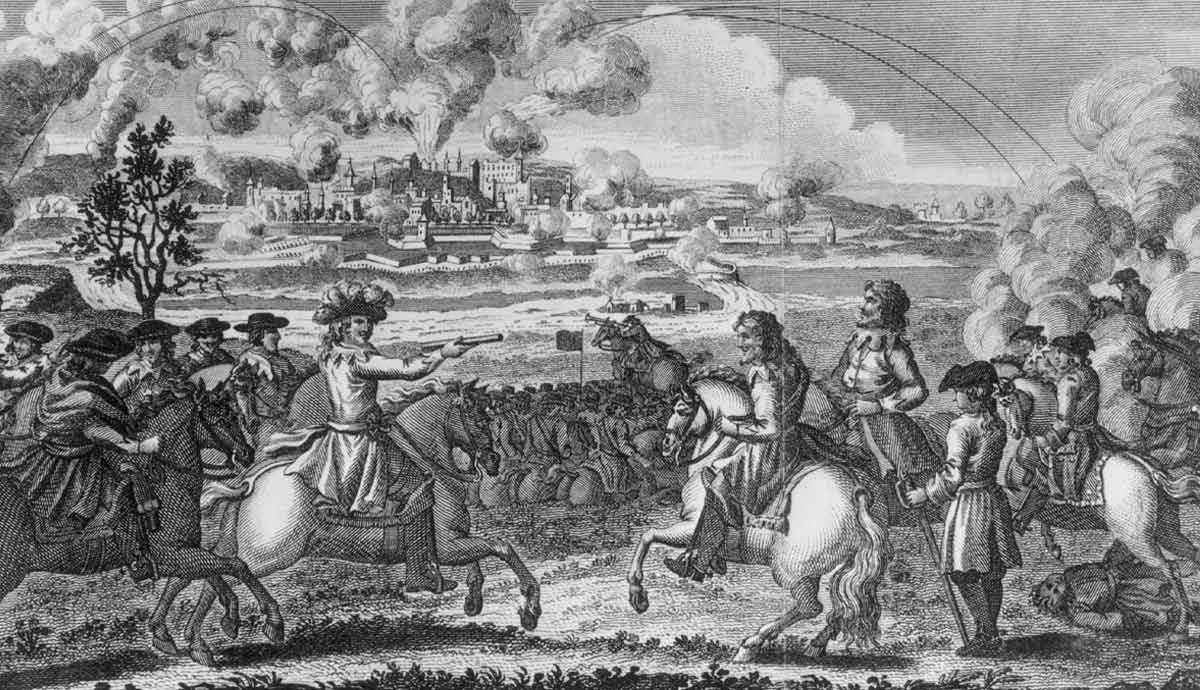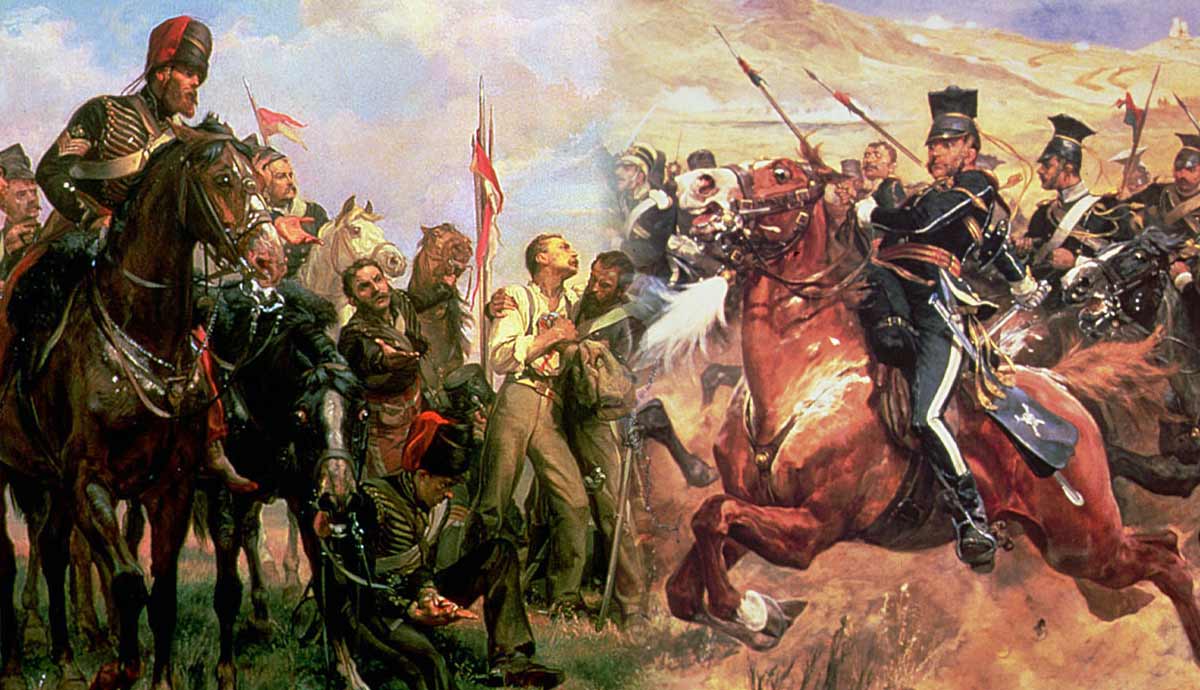
Irish soldiers have fought for numerous foreign powers across history. Thousands of Irish emigrated to the United States in the wake of the Great Famine. The Irish were an unpopular immigrant group in mid-19th-century America since they were predominantly Catholic Gaelic speakers. Yet tens of thousands of Irishmen willingly enlisted to fight as part of the Irish Brigades in the American Civil War. What motivated them to do so?
Irish Soldiers Abroad

The Irish Brigades in the American Civil War were not the first Irishmen to fight under a foreign flag. Irish soldiers had been fighting overseas in Europe in some form since the Middle Ages. Hiberno-Norman lords brought Irish auxiliaries with them on their campaigns in France for the English king. Increasing amounts of Irish soldiers went to the continent as English control over Ireland tightened in the 16th century. Spain had enough refugee soldiers to raise an Irish Brigade in 1587, and Irish regiments were still being formed in the 1700s.
Similarly, France received thousands of Irish soldiers after the Williamite War and their Irish Brigade existed until the time of the French Revolution, even aiding in the Jacobite Rebellions in Scotland. Irish officers also served across the continent, most prominently the Habsburg Empire, Prussia, and Russia. The large numbers of Irish in continental service only began to fall when the British government loosened restrictions on Catholics serving and from the 1800s onward, large numbers of Irish enlisted in the British Army.
Just over a decade before the American Civil War, US forces defeated Mexico in the Mexican-American War 1846-1848. During the conflict, large numbers of Irish soldiers had deserted from the US Army to join the Mexican Army. They left because of harsh conditions, promises of land in Mexico, and sympathies with the cause of a smaller Catholic country fighting a larger Protestant one. Enough of them left to form the Saint Patrick’s Battalion, known in Spanish as the San Patricios.
From Rebel to General

The most famous commander of the Irish Brigade in the American Civil War was Thomas Francis Meagher, an ardent Irish nationalist. He had led the failed 1848 Rebellion, also known as the Young Ireland rebellion or the Battle of Ballingarry. International outcry prevented his execution and he was transported to Australia where he escaped in 1852. He went to the United States where he became a lecturer in law and journalism.
Despite personal sympathies with the Confederacy, Meagher remained a staunch Unionist as he felt he had a duty to the country that had granted him asylum. In New York, he joined the 69th Infantry Regiment—nicknamed the Fighting 69th—as a captain despite his lack of military experience. He was promoted to colonel after the capture of his commander Michael Corcoran at the Battle of Bull Run. Meagher returned to New York then to recruit for an Irish Brigade, a larger formation consisting exclusively of Irish soldiers. The Brigade was formally authorized in September 1861.
Irish immigrants at the time were unpopular. They were seen as violent, barbaric drunks and their predominantly Catholic religion put them at odds with the established Old English Protestant families in the northeast. The fact many of the poorer immigrants also came from Gaelic Irish speaking regions was another aggravating factor. Meagher believed that serving in the war would improve the condition of the Irish immigrant population in the United States. He also had a secret belief that it would be ideal training for future Irish patriots so that they could use their experience from the war to fight for Irish independence back home.
Success in the War

The core of the Irish Brigade were three New York regiments, the 63rd, 69th, and 88th. The unit was completed with a 4th regiment, the 29th Massachusetts. This was a strange choice as the regiment was a self-described Yankee unit, one composed of Protestant English descendants which made them an unlikely match with three regiments of New York Irish. The 29th behaved correctly if not warmly to their Irish comrades and an undiplomatic Meagher gave them a backhanded compliment when he called them “Irishmen in disguise.” However, he recognized their bravery on the battlefield and even offered them an Irish color, which was declined.
The 29th were eventually replaced with the 28th Massachusetts and the 116th Pennsylvania, both Irish regiments. The Brigade fought well in the Seven Days Battles but took heavy losses in the sanguinary Battle of Antietam in September 1862. This was to be followed by another bloody day at the Battle of Fredericksburg that December. Chancellorsville in May 1863 completed the trinity of destructive engagements.
The Irish Brigade gained a reputation for toughness. At Antietam they advanced repeatedly into Confederate fire until ordered to withdraw. The Confederate position in a sunken road earned the nickname “Bloody Lane” owing to the heavy death toll. Similarly, at Fredericksburg, the Irish advanced into Confederate volleys, unable to get in range with their outdated muskets. Their smoothbore weapons lacked the accuracy of rifles and the Irish paid a heavy price for the difference as they were shot at before they could return fire.
Decimation and Destruction

The constant engagements were having a serious effect on the Irish Brigade’s numbers. At Fredericksburg alone, nearly 600 out of the 1,200 Irish Brigade soldiers were casualties. Meagher requested permission to recruit the Brigade back to full strength but was denied. He requested permission in May 1863 after Chancellorsville but Union authorities denied it again. A frustrated Meagher resigned but was reassigned to Union forces in the west. His replacement was another Irishman, Patrick Kelly. The only reinforcements the Brigade received were recovered soldiers from hospitals. By the time of Gettysburg in July 1863, the Brigade could only field some 600 soldiers, less than a regiment.
The Brigade fought well at Gettysburg but again their ranks were scythed down. The second day of fighting saw the Irish Brigade join a multi-brigade attack on Confederate positions in the Wheatfield. The Irish took Stoney Hill but were driven back by the Confederate counterattack with over a third dying in the fighting. The slow death of the Brigade continued even with the belated arrival of replacements. Kelly was replaced by Richard Byrnes but was quickly reinstated when Byrnes was killed at Cold Harbor. Kelly himself fell in battle leading a charge at the Siege of Petersburg in June 1864.
The US Army disbanded the Brigade and folded the survivors in with other units. A second Irish Brigade was eventually reformed from the original regiments, but recruitment diluted its Irish character. It was eventually disbanded in July 1865 after the cessation of hostilities.
Irish Fighting for the Confederacy

Foreign born soldiers were represented in greater numbers in the Union Army than among the Confederate forces. Over a million Germans lived in the northern states by 1860, they and their descendants made up an estimated ten percent of the Union’s two million soldiers. The Irish weren’t far behind, with nearly 150,000 in the Union army. In the Confederacy, the numbers were much smaller though contingents of Irish, Germans, Italians, and Poles were counted in the thousands. Certain units had a foreign character but nothing compared to the scale seen on the Union side.
While there was never a designated Irish Brigade in the Confederate Army, several units had large numbers of Irish or Irish-Americans in the ranks. A number of Irish also served as officers in Confederate uniforms. The Virginian Regulars 1st Battalion was popularly known as the Irish Battalion. The Louisiana Tigers had a large Irish contingent and quickly gained a reputation for indiscipline and brawling while also displaying courage in battle.
The war’s politics caused rifts between former friends. One of Meagher’s closest friends chose to fight for the Confederacy. John Mitchel had settled in the south and felt loyalty to his adopted home. While Meagher also had sympathies for the secessionists, the two eventually fell out over the issue of slavery. Meagher chose to fight for the Union, Mitchel and three of his sons fought for the Confederacy.
From One War to Another

Some of the veterans of the Irish Brigade could never escape their past. Their commander had left Ireland as a rebel, now some chose to return there. Veterans lent their expertise to the Fenian Brotherhood, an Irish revolutionary organization, both at home and abroad. Civil War veterans attempted to transport arms to Ireland for the 1867 Fenian Rising but poor organization and British counterintelligence efforts damned it from the start.
Between 1866 and 1871, the Fenians caused an international incident by launching raids into Canada from American soil. Despite their divided loyalties in the American Civil War, the Fenian cause united Irishmen. At the Battle of Ridgeway, 1866, former Union soldiers fought alongside former Confederate troops. The raids had mixed success. The veteran Fenians did win some tactical successes against inexperienced Canadian militia but were usually forced to retreat when faced with British regulators and larger bodies of militiamen. Since the raids were being launched from American territory, the US government was also forced to act by arresting conspirators and confiscating weapons and ammunition.
The legacy of the Irish Brigade is continued by the “Fighting” 69th—which continues to be an active unit in the New York National Guard. Its dedication and reliability were begrudgingly recognised at the time even by their opponents, and over time they gained acceptance from their adopted countrymen. As the British war correspondent George Townsend put it, “When anything absurd, forlorn, or desperate was to be attempted, the Irish Brigade was called upon.” Only two other infantry brigades in the Union Army suffered higher losses than the Irish Brigade.










